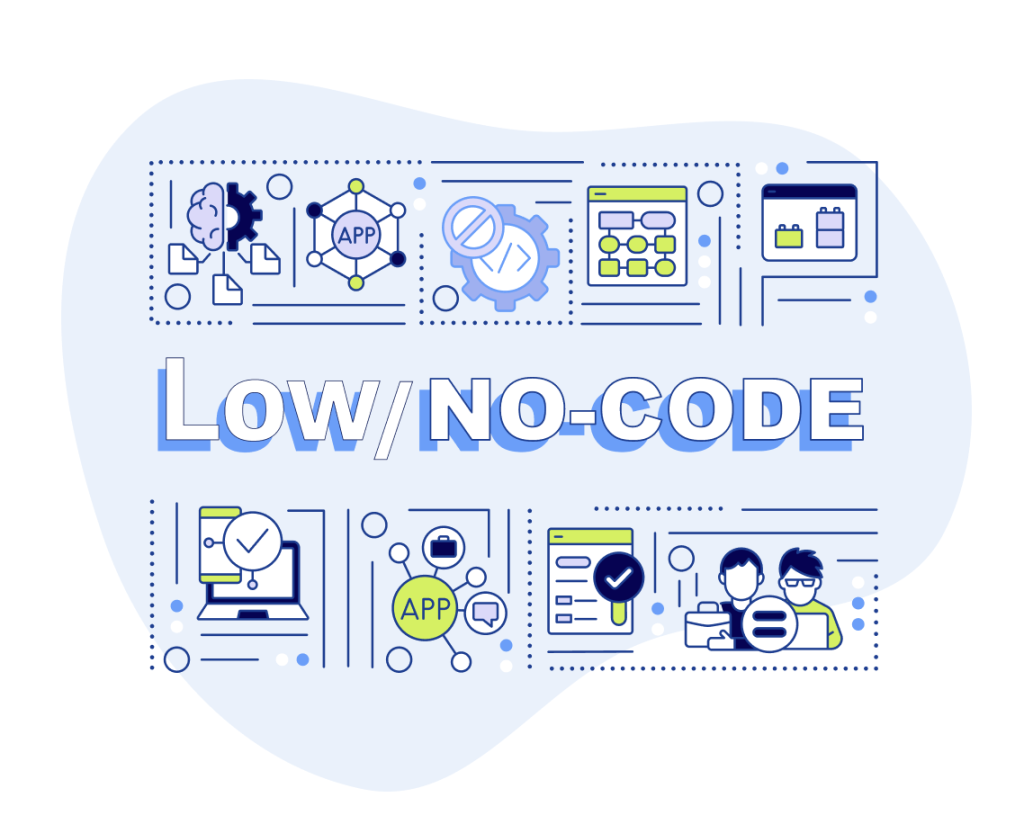Are Low/No-Code Platforms Worth the Hype in the Testing Industry?

Low/no-code platforms have been gaining popularity in recent years, especially in the testing industry. According to market estimates, the global low-code and no-code market stood at $25 billion in 2022 and is expected to reach $45.5 billion by 2027. Given that these platforms enable the creation and automation of applications without the need for writing code, they promise to reduce costs, increase efficiency, and make it easier for non-technical team members to get involved in code development as well as testing. But are low-code development and no-code platforms worth the hype? In this article, we will explore the benefits of low/no-code in testing and best practices for using it effectively.
How Low/No-Code Automation in Testing Gives You an Edge
According to Gartner, by 2025, 70% of the new applications developed by enterprises will use low-code or no-code technologies, a big leg up from less than 25% in 2020. One of the main benefits that have made low/no-code a go-to platform for testing is the significantly reduced time and cost of test automation. Using drag-and-drop interfaces and pre-built templates makes it possible to automate test cases faster and with less specialized skills, saving time and budget and making it easier to scale testing efforts.
The increased efficiency and flexibility offered by low/no-code testing solutions also work in its favor. By automating repetitive tasks, such as test case execution and data management, enterprises can free up time for testers to focus on more complex tasks. Additionally, low/no-code solutions can be customized to fit the specific needs of a team, which can improve overall testing efficiency.
Moreover, by empowering citizen developers and improving accessibility for non-technical team members, low-code or codeless testing solutions also provide a shot in the arm of overworked tech teams. Visual interfaces and simplified processes make it easier for non-technical team members to get involved in testing and contribute to the quality assurance process. Additionally, they can be more scalable and maintainable than custom-built solutions and often come with built-in governance and security features, making it easier to manage and secure testing environments.
Best Practices for Using Low/No-Code Automation in Testing
To get the most out of low/no-code solutions in testing, it is essential to follow industry best practices. We discuss the top three below.
- Identify use cases: Begin with identifying specific use cases where low/no-code can add value. This can help teams focus on the areas where they will see the most benefit from low/no-code automation and develop a clear strategy for implementation. Some examples of specific use cases where low/no-code can add value include:
- Automating repetitive tasks, such as data entry or validation, improves efficiency and reduces errors.
- Building custom workflows and forms to support specific business processes, such as incident management or customer service.
- Creating and executing test cases for software products without the need for complex coding.
- Providing a self-service portal for end-users to access information or request assistance.
- Building and deploying custom applications to support specific business functions or processes, such as marketing automation or CRM.
It is critical to note that while low/no-code can provide many benefits, organizations should carefully evaluate their specific needs and requirements to determine the most appropriate approach for their use case.
2. Evaluate different low/no-code platforms: Enterprises should look at factors such as ease of use, scalability, and security features when choosing a no/low-code development platform. Additionally, teams should continuously monitor and evaluate the performance of low/no-code solutions to ensure that they meet their needs and deliver the expected results. This evaluation can be done by considering several factors, including:
- Functionality: The platform should have the necessary functionality to support the specific testing needs of the organization, including features such as test case management, automated test execution, and integration with other testing tools.
- Usability: It is vital to have a user-friendly interface, allowing easy test case creation and execution. The platform should also provide visual workflows, drag-and-drop interfaces, and pre-built components to make it easy for non-technical team members to create and execute test cases.
- Scalability: The capability to support the testing needs of the organization as it grows is critical. The selected low/no-code software should be able to handle large volumes of test cases and test data.
- Integration: The platform should be able to integrate with other tools and frameworks used by the organization, such as JIRA, TestRail, XRay.
- Support and documentation: The platform should have good documentation and support so that users can get help when needed.
- Pricing and licensing: The cost of the platform should be considered, as well as the licensing model.
It is also recommended to research the vendor’s track record, case studies, and customer reviews. It may be helpful to try a few platforms on a trial basis before committing to one.
3. Ensure robust governance and security: This is vital to ensure the safe and secure operation of their testing processes. Here are a few examples of how teams can implement governance and security measures:
- Access control: Implementing access controls to ensure that only authorized users have access to the low/no-code platform and its test cases.
- Data protection: Ensuring that all test data is protected and that sensitive information is not exposed. This can be achieved through data encryption and secure storage.
- Auditing and monitoring: Tracking all activities and changes made within the platform to detect and respond to any suspicious activity.
- Version control: Implementing version control for test cases to track changes and ensure that the correct version of the test case is being used.
- Compliance: Ensuring that the platform and test cases comply with relevant laws, regulations, and industry standards.
- Regular security testing: Regularly testing the platform for vulnerabilities and security risks and taking appropriate measures to address any issues identified.
- Training: Providing training to users on how to use the platform securely and best practices for data protection and governance.
By implementing governance and security measures, teams can ensure that their low/no-code solutions for testing are safe and secure and comply with relevant regulations and standards.
Staying Ahead of the Game with Qyrus
Low/no-code platforms can provide a wide range of benefits for teams in the testing industry. From reducing costs and increasing efficiency to making it easier for non-technical team members to get involved in testing, the benefits are incredible. By identifying specific use cases, carefully evaluating different platforms, and implementing governance and security measures, teams can use low/no-code automation to improve their testing processes and achieve their goals. And Qyrus is a proven and trusted partner for global enterprises looking to achieve these objectives.
Qyrus is a comprehensive, codeless, and highly intelligent test automation platform for all things digital. It efficiently tests Web, Mobile, and APIs with a single AI‑Powered cloud‑based platform that detects and eliminates bugs much earlier in the software development lifecycle. Its codeless, taxonomy driven interface helps increase test coverage and eliminates the need for time-consuming custom frameworks and expensive test infrastructure. Qyrus uses AI to empower everyone. It empowers testers, developers, and business teams to produce high‑quality products for an exceptional user experience.






